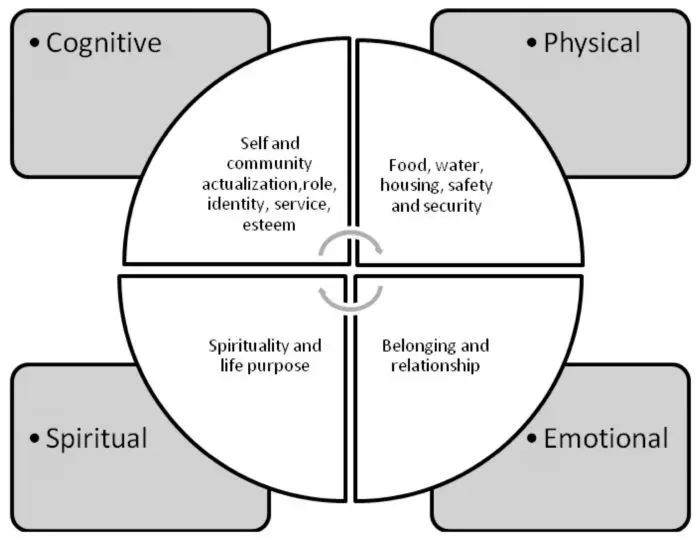Table of contents
We cannot say it better than Teju Ravilochan in the link above:
This is our moment not to create something new, but to return to an ancient way of being, known to the Blackfoot, the Lakota, the Natives of the Cheyenne River Territory, and other First Nations. It’s a story that leaves no one without family: a story in which we begin by offering each other belonging, and continue by teaching our descendents how we lived: together.
This is a story about Big, Perceptive, Persistent, Transformative, Fruitful Caring.
Objectives¶Even Abraham Maslow, whom the above link considers in detail, came to the realisation - later in life - that:
Self-actualization is not enough. Personal salvation and what is good for the person alone cannot be really understood in isolation. The good of other people must be invoked as well as the good for oneself.
Through the Regeneration Guild, we will:
- Surface a holistic, multidimensional definition of "regeneration", honoring each perspective and understanding that we will hold different value-sets — finding intersubjective consensus,
- Delve into our system of systems and identify key leverage points that hold exceptional potential to catalyze a rapid, graceful transition to a regenerative paradigm,
- Reflect on our own "loci of control" — what is within our power to change.
As an outcome, we hope to make a bit more sense of what a regenerative economy will look like and outline a credible path to bringing it about, aided by tools being built on the decentralized web.
Preparation¶To prepare for our first workshop, we recommend familiarizing yourself with:
- Video: Five Features of Money, Sep Kamvar (2018),
- Article: What is Regenerative Finance, Letty Prados (2022)
- Podcast: Regenerative Futures with Kate Raworth, Kate Raworth, Sarah Ichioka, and Michael Pawlyn (2022);
- Framework: The nine planetary boundaries, Stockholm Resilience Centre;
- Paper: A General Framework for Analyzing Sustainability of Socio-Ecological Systems, Elinor Ostrom (2009);
- Website: Regeneration, by Paul Hawken. What would the chapter on economic systems look like if Paul had included one?
Some questions to ponder:
- How are Complex Intentional Systems distinguished as a subset of Complex Adaptive Systems?
- How is the a regenerative financial system related to a regenerative economy? Is it a requirement? What are the limits of finance?
- How can we embed intention into our financial infrastructure, so it best serves human flourishing?
- How might opt-in, substantive laws created on Ethereum change the mode and method of governance? How do we craft digital infrastructure that conscious people want to choose to dwell in, acknowledging that the spaces that we occupy characterize the tone of our interactions?
- What do you feel needs regenerating? What are some metrics for monitoring that regeneration?
- Is it possible for something to be "too healthy"?
🙏🌱💚
